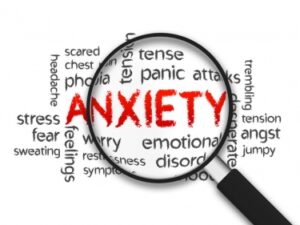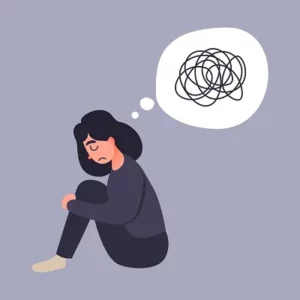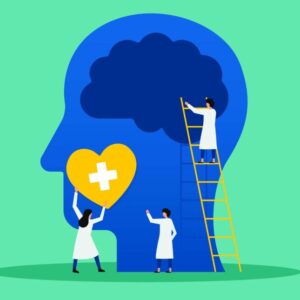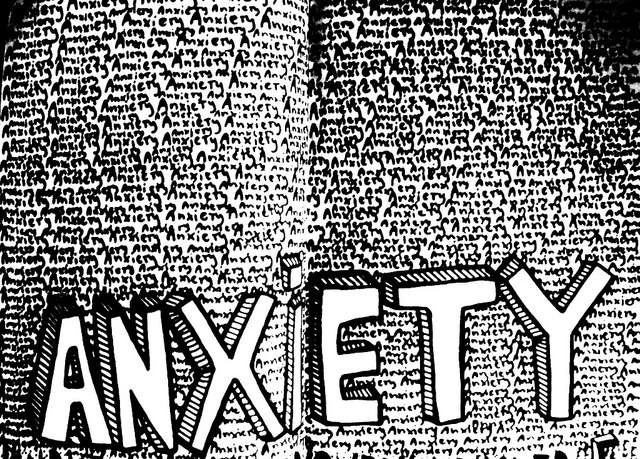The fifth edition of the Diagnostic and Statistical Manual of Mental Disorders (DSM-5) was released in 2013. It made some major changes to the diagnostic criteria for anxiety disorders. If you are a mental health professional or a person who lives with an anxiety disorder, it is important to be familiar with these changes. This blog post will provide an overview of the new DSM-5 diagnostic criteria for anxiety disorders.
Contents
Defining Anxiety
Anxiety is a normal emotion that we all experience at different times in our lives. It is a feeling of worry, nervousness, or fear that can be mild or severe. Anxiety is a normal response to stressors like taking a test or giving a speech. It becomes a problem when it interferes with our daily lives and prevents us from doing the things we want or need to do.
There are several types of anxiety disorders, each with its own set of symptoms. The most common anxiety disorders are generalized anxiety disorder (GAD), panic disorder, and social anxiety disorder (SAD). All of these disorders can be diagnosed using the DSM-IV criteria, but there are some important changes in the DSM-5.
Defining DSM-5

DSM-5, a popular acronym for the Diagnostic and Statistical Manual of Mental Disorders, is published by the American Psychiatric Association (APA). The DSM is used by mental health professionals to diagnose mental disorders. It is also used by insurance companies to determine coverage for mental health treatment.
The fifth edition of the DSM (DSM-5) was released in 2013, and it made some major changes to the diagnostic criteria for anxiety disorders. If you are a mental health professional or a person who lives with an anxiety disorder, it is important to be familiar with these changes.
Anxiety In DSM-5
The DSM-5 has a new and specific criteria for anxiety diagnosis. In order to be diagnosed with an anxiety disorder, you must have:
- A feeling of fear, worry, or unease that is persistent and interferes with daily activities.
- Avoidance behaviors (e.g., avoiding certain places or situations)
- Physical symptoms such as a racing heart, sweating or trembling.
These criteria are similar to the DSM-IV criteria, but there are some important changes. First, the DSM-5 requires that the symptoms cause significant distress or impairment in order to be diagnosed with an anxiety disorder. This means that people who experience milder symptoms may not meet the diagnostic criteria. Second, the DSM-5 requires that the symptoms last for at least six months in order to get a diagnosis with an anxiety disorder. This is a change from the DSM-IV, which required that the symptoms last for at least one month.
The DSM-5 also includes some new disorders in the category of anxiety disorders. These disorders are:
- Separation anxiety disorder
- Selective mutism
- Specific phobias
- Substance/medication-induced anxiety disorder
- Trauma and stressor-related disorders (e.g., PTSD)
The DSM-5 has also made some changes to the diagnostic criteria for panic disorder. In order to get a diagnosis with panic disorder, you must have:

- Recurrent and unexpected panic attacks
- Heart palpitations or pounding heart
- Sweating
- Trembling or shaking
- Shortness of breath or feeling smothered
- Feelings of choking
- Chest pain or discomfort
- Nausea or abdominal distress
- Feeling dizzy, unsteady, or lightheaded
- Feelings of unreality (derealization) or fear of losing control (depersonalization)
- Tingling or numbness in the hands, feet, or face
- Chills or hot flashes
- Fear that you are going crazy or will die
At least one of the attacks must have one month (or more) of persistent worry about having another attack or about the consequences of the attack. This worry must interfere with daily activities.
Finally, the DSM-5 has made some changes to the diagnostic criteria for social anxiety disorder (SAD). In order to get a diagnosis with SAD, you must have:
- Significant fear of one or more social or performance situations in which you face exposure to unfamiliar people or to possible scrutiny by others.
- The fear must be out of proportion to the actual danger posed by the situation and must interfere with daily activities.
- Symptoms may include sweating, heart palpitations, trembling, and avoiding public speaking or other situations where you may face embarrassment.
These are just a few of the changes that happen in the DSM-5. If you think you may have an anxiety disorder, it is important to talk to your
Changes in the DSM-IV-TR to DSM-5
The most significant change in the DSM-V is the elimination of the subtypes of generalized anxiety disorder (GAD). In the DSM-IV-TR, there were six subtypes of GAD:

- with or without excessive worry
- with or without generalized onset
- early onset (childhood) or adult onset
- episodic or continuous
- with panic attacks or without panic attacks
The DSM-V eliminated all of these subtypes and created one diagnosis for all patients meeting the criteria for GAD. This change was made because research has proof that the subtypes are not useful in predicting treatment response or outcome.
Another significant change in the DSM-V is the addition of a new category that is “other specified anxiety disorder” (OSAD). This category is for patients who do not meet the criteria for any specific anxiety disorder, but who still have significant symptoms of anxiety. Some examples of OSAD include panic disorder with agoraphobia, social anxiety disorder with performance-only symptoms, and a specific phobia of blood/injection/injury.
The DSM-V also introduces the concept of “severity” when diagnosing an anxiety disorder. This means that a diagnosis will take into account how much distress or impairment the disorder causes in a person’s life.
Another important change is the inclusion of “subthreshold” symptoms. These are symptoms that do not meet the full criteria for an anxiety disorder, but they still cause some distress or impairment in a person’s life.
Implications Of The Changes in the DSM-V
The changes in the DSM-V will have several implications for mental health professionals and people living with anxiety disorders. First, it will be important to familiarize yourself with the new diagnostic criteria. Second, you should keep in mind that the subtypes of GAD are no longer relevant, and all patients meeting the criteria for GAD will have a diagnosis with the same disorder. Finally, you should know that there are two new categories of anxiety disorders in the DSM-V: OSAD and UAD.
If you are a mental health professional, the changes in the DSM-V may require you to update your diagnostic practices. If you are a person living with an anxiety disorder, the changes may not have a significant impact on your diagnosis or treatment. However, it is always important to keep up-to-date on the latest developments in mental health research and practice.
Who Can Diagnose Anxiety From DSM-5?

A mental health professional, such as a psychiatrist, psychologist, or clinical social worker, can diagnose anxiety disorders using the DSM-V. To make a diagnosis, the mental health professional will conduct a clinical interview and ask about your symptoms. Some of the most common and professional people to ask for help are:
- Psychologists: Who have either a Doctor of Psychology (PsyD) degree or a PhD in psychology.
- Psychiatrists: These are medical doctors (MDs) who specialize in mental health.
- Licensed Clinical Social Workers: Who have a master’s degree in social work (MSW).
These professionals can help you with your anxiety and other mental disorders you may have. If you think you might have an anxiety disorder, the first step is to talk to your doctor or another mental health professional. Your doctor can rule out the physical causes of your symptoms and refer you to a mental health professional if they think you might benefit from one.
Once you see a mental health professional, they will ask about your symptoms and how they impact your life. They may also give you a questionnaire or self-report scale to assess your symptoms.
If you get a diagnosis with anxiety disorder, the mental health professional will work with you to develop a treatment plan. Treatment for anxiety disorders often includes psychological therapy and medication. You may also get recommendations to make some healthy lifestyle changes to manage your symptoms. If you have an anxiety disorder, it is important to seek treatment so that you can live a healthy and fulfilling life.
Conclusion
Conclusively, the DSM-5 has some significant changes to the way anxiety disorders get an official diagnosis. These changes will have implications for mental health professionals and people living with anxiety disorders. It is important to familiarize yourself with the new diagnostic criteria and keep up-to-date on the latest developments in mental health research and practice.
For more information, please contact MantraCare. Anxiety is a common mental health condition characterized by persistent feelings of worry, fear, and apprehension. If you have any queries regarding Online Anxiety Counseling experienced therapists at MantraCare can help: Book a trial Anxiety therapy session


